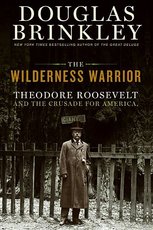|
The first "Earth Day," April 22, 1970, was marked by massive demonstrations as over 20 million Americans rallied on the streets, in parks, on campus quadrangles and in urban auditoriums across the country for a healthier, more sustainable environment. The brainchild of Wisconsin Senator Gaylord Nelson, who was determined to push environmental protection to the top of the national agenda, achieved a rare political alignment amidst the bitterness of the Vietnam War era: conservatives and liberals, Democrats and Republicans (Representative Pete McCloskey (R-Cal.) served as co-chair), urbanites and residents of rural communities, rich and poor all came together to support the need to protect our most precious asset and our collective home. The first Earth Day also led to the creation of the Environmental Protection Agency and the passage of the Clean Air, Clean Water, and Endangered Species Acts (all signed by that most unlikely of environmental heroes, Richard Nixon). But there are many heroes in the movement to raise environmental awareness and promote conservation; some blazed the trail, others continue to pioneer the path:  The Wilderness Warrior: Theodore Roosevelt and the Crusade for America (Douglas Brinkley, 2009) What made Theodore Roosevelt an environmental hero was his conviction that 2,000-year-old redwood trees, ancient rock formations and pelicans belonged to future generations of Americans as well as to the past. Well, in the face of a commitment to eternity, what were the arguments of mining tycoons, hunters, local businessmen and not-so-visionary congressmen? From the time he became president, in 1901, until he left office in 1909, Roosevelt saved over 234 million acres of the American wilderness. Brinkley captures the sights, smells and sounds of the era and takes us into the rough-and-ready world of the President who was willing to use his "big stick" when necessary and didn't talk softly about his determination to set aside lands with the creation of the National Wildlife Refuge System. In a simpler era, Roosevelt made conservation a vital, manly, patriotic pursuit.  The Camping Trip That Changed America (Barb Rosenstock, 2012) For younger readers, here's a new picture book that relates the story of Roosevelt's tour of the Yosemite Valley area and the camping trip he took with preservationist John Muir. The men rode into the wilds on horseback, camped together with a minimum entourage, and got caught up in the beauty of sequoias and a spring snowstorm. Muir (and the wonders of the Sierras) convinced Roosevelt that the park needed federal control and management and in 1905, Congress designated it a National Park. Rosenstock captures Roosevelt's exuberance and Muir's ardent dedication. as does illustrator Mordecai Gerstein.  A Sand County Almanac (Aldo Leopold, 1949) Aldo Leopold, often considered to be the father of wildlife ecology, was one of America's first professional foresters. He helped found the National Wildlife Federation, the Wilderness Society and wrote a little book which fostered a greater interest in ecology, conservation and, later, the environmental movement. Part essay, memoir and polemic, A Sand County Almanac explores the wondrous diversity of our natural world and celebrates its beauty in elegant, evocative prose. Read it as the seasons progress to enhance your own observations and appreciation of nature's perfection.  A Passion for Nature: the Life of John Muir (Donald Worster, 2008) Here is a scholarly yet engrossing account of the great conservationist and founder of the Sierra Club. Worster shows us the man behind the legend, through extensive use of Muir's correspondence. Born in Scotland and raised in rural Wisconsin under the harsh rule of his abusive father, Muir lit out for California after the Civil War. What he saw and did there made history. Worster paints a loving portrait of an eternal wanderer who was also a doting husband and father, a talented scientist, friend to the famous and the humble, and a man who wielded his political influence for good.  John Muir: Nature Writings (Library of America, 1997) If you want to read the original, try this volume, which contains all of Muir's seminal writings. It includes The Story of My Boyhood and Youth, My First Summer in the Sierra, The Mountains of California, Stickteen, and many essays along with illustrations, a chronology of his life, and scholarly notes.  And then there's this classic. All of these books remind us of a key point in environmentalism and conservation: we cannot save what we do not love.
0 Comments
Leave a Reply. |
AuthorTo find out more about me, click on the Not Your Average Jo tab. Archives
February 2024
Categories
All
|
 RSS Feed
RSS Feed